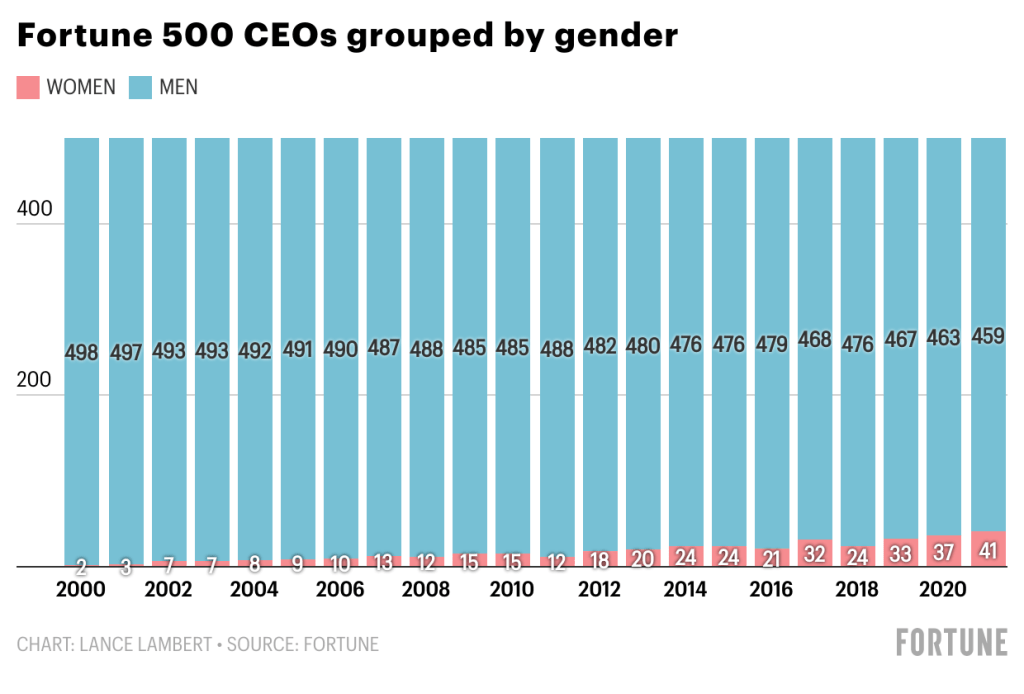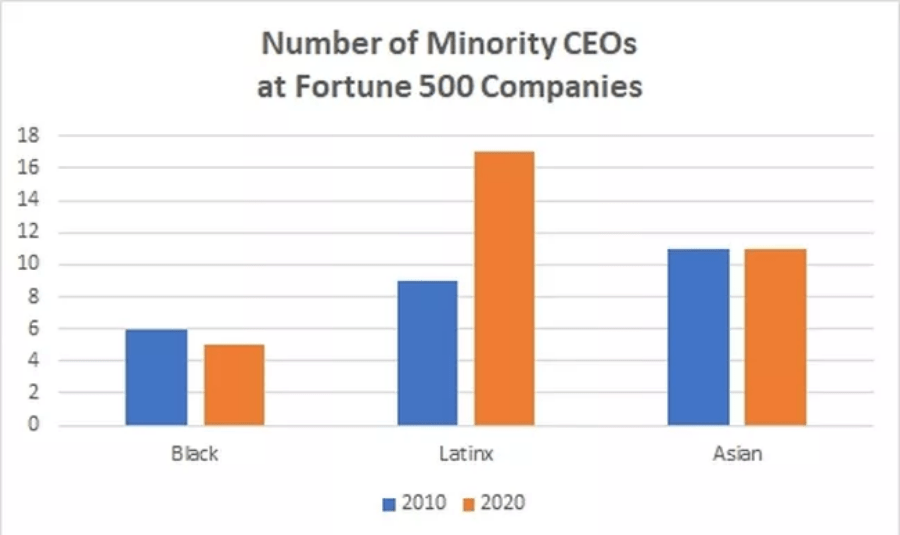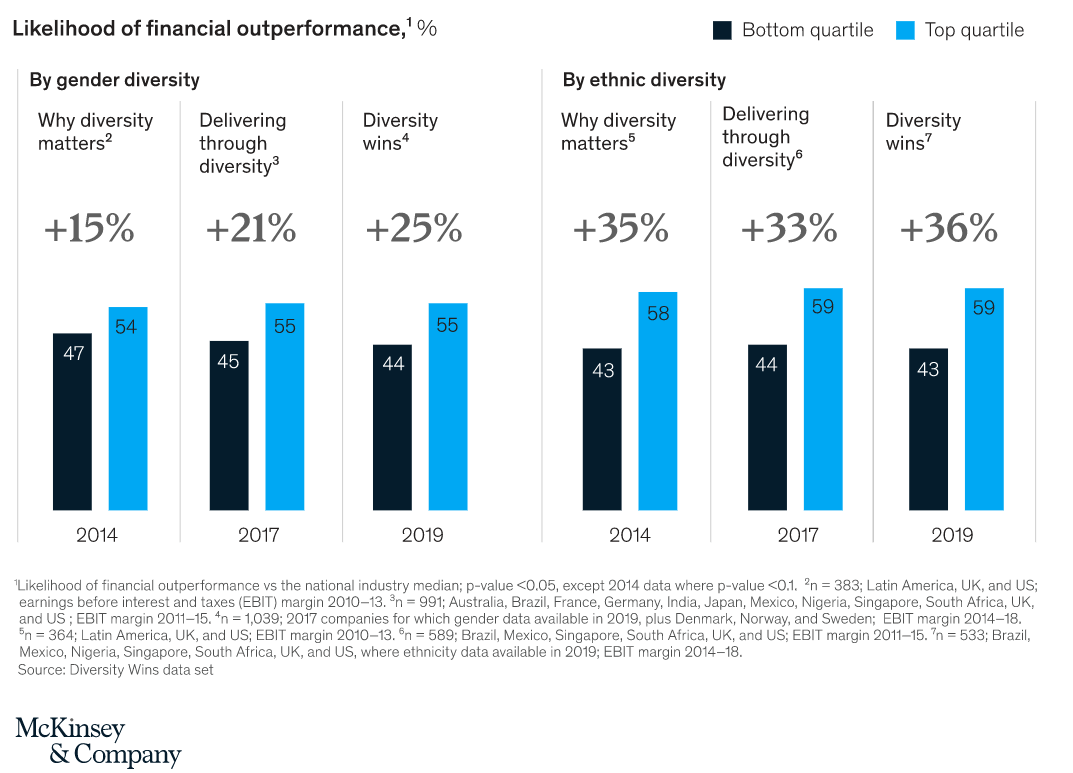
Strengthen Your Company Culture with These Crucial Values
Organizations are looking inwardly as they try to understand how to succeed in today’s political and socio-economical climate. The topic of diversity, equity, and inclusion (DEI) are often at the forefront of these internal discussions (rather, they should be).
Embracing diversity in all its forms means first to understand its current state in the workplace and the importance of diversity for organizations and society as a whole. Once ignorance is met with research, understanding, and the acknowledgement that there is room for significant improvement and what it means for people and businesses, it is easier to make real, lasting changes that will benefit employees, managers, executives, and the community.
Government of Canada Resource: Building a Diverse and Inclusive Public Service: Final Report of the Joint Union/Management Task Force on Diversity and Inclusion
The current state of workplace diversity, equity, and inclusion
Canada is well-known to be a nation that values multiculturalism in our communities. However, people from marginalized groups still face negative experiences and are often excluded in the workplace due to their backgrounds and identities.
Diversity, equity, and inclusion are critical for business resilience, productivity, growth, and financial sustainability, so why is this still an issue in the workplace?
Particularly after the pandemic, companies and organizations have been prioritizing risks and threats to their basic needs. Whether that’s adapting to the hybrid model, moving to an agile work environment, consolidating their workforce capacity, maintaining productivity, dealing with workplace conflict, restructuring their culture, or prioritizing the physical and mental wellbeing of their current employees – there is a lot at stake and attention must be paid for the survival of these organizations.
But it’s naïve to think that DEI doesn’t play a significant role in the challenges mentioned above. In fact, by not prioritizing DEI, businesses and organizations could face significant challenges on top of their current roadblocks, such as disgruntled staff, high turnover rates, poor reputation, client dissatisfaction, low morale, decreased productivity, lack of resources, and loss of profits.
Read more: Effective Ways to Improve Workplace Morale
The power of diversity, equity, and inclusion in the workplace
Organizations who unlock the full potential of diversity, equity, and inclusion are positioned to experience a wave of improved organizational health, resilience, business performance, and satisfaction in knowing they are contributing to the revival and transformation of the modern workplace.
Empathy, psychological safety, and workplace mental health
Empathy – Empathy is a major factor in identifying that there is a problem that needs correcting in the workplace when it comes to diversity, equity, and inclusion. To bridge the gap between identifying the problem and finding an appropriate action to take, organizations must empathize and care enough to invest in a solution.
Read more: Professionalism, Impartiality, and Empathy in Workplace Investigations
Psychological Safety – When employees feel safe to voice their opinions, ideas, concerns, and questions without the fear of retaliation, rejection, ridicule, or resentment, that is when psychological safety is achieved in the workplace. Applying values in DEI signifies that employees are free – encouraged, even – to be their authentic selves through their identity of race, gender, ethnicity, sexual orientation, family status, etc.
Read more: Promoting Psychological Safety in the Workplace
Mental Health – Employee mental health is proportionate to the level of DEI found within the structure and culture of an organization. Lacklustre efforts for DEI can lead to low employee morale, lack of purpose, and a sense of zero control in one’s future. In contrast, organizations that pour genuine efforts into DEI by leveraging actionable tools and programs find that their staff’s mental health and overall wellbeing improves significantly.
Read more: The Importance of Promoting Mental Health in the Workplace
Types of diversity
Diversity can be broken down into its simplest definition – the state of being different. But what is considered different in our society?
In the 2020 release of Fortune 500, 91.9% of all CEOs listed are men, and 8.1% are women. Women, overall, are starting to break through barriers and are finding their place among the companies deemed innovative in our society by Fortune. But out of 500 companies, only 41 had female CEOs in 2020.

Source: Lance Lambert, Fortune 2021
Comparatively, a mere 1% of CEOs on the list are Black, 2.2% are Asian, and 3.4% are of Latin descent.

Source: Richie Zweigenhaft, co-author of Diversity in the Power Elite
Diversity can be further categorized in the following areas:
- Race
- Age
- Gender
- Sexual Orientation
- Disability
- Citizenship
Be aware of unconscious bias
Unconscious bias – also known as implicit bias – is the unfair judgement or prejudice against people, situations, or groups. The reason it’s called ‘unconscious’ bias is that research suggests the brain automatically makes these unfounded judgements due to our experiences, environment, and background. These types of assumptions result in certain groups of people being penalized while others are rewarded. In other words, unconscious biases are found to be prevalent against minorities and marginalized groups based on gender, race, ethnicity, disability, age, religion, and sexual orientation.
A great way organizations can combat unconscious bias in their teams is to offer workshops, training, online courses, and access to webinars, seminars, and other resources. By learning about unconscious bias and understanding how to avoid it in the workplace and beyond, employees will be able to identify their own biases, address the challenges they pose and work toward eliminating negative judgements.
How workplace diversity benefits businesses
Aside from social responsibility, workplace diversity benefits organizations in the following ways:
- Variety of perspectives
- Increased creativity, performance, productivity
- Better and faster decision-making/problem solving
- Better understanding of other markets and customer groups
- Higher employee engagement
- Improved company reputation
- More trust among employees, clients, partners
- Improved hiring results and lower turnover
- Competitive edge
- Increased profits
How to leverage the advantages of workplace diversity
Leverage diverse job boards
In order to reach more diverse candidates, consider posting your jobs on niche job boards specialized in diversity, such as:
Job boards that aggregate DEI:
Offer internships and scholarships
Create and offer internships and scholarships to people from underrepresented groups.
Join programs with post-secondary institutions and other community services that offer internships and scholarships to underrepresented individuals.
Highlight diversity on website
Diversity can be depicted on websites through design, content, and accessibility. Make sure your website is up to date on accessibility standards, use images that show a variety of people from different backgrounds, sexes, ages, etc.
You can also ensure your organization’s commitment to DEI is front and centre via your ‘About’ page and ‘Career’ page. Always include a summary of your dedication to DEI in every job posting you promote.
Have diversity in leadership and hiring roles
If an employee is part of a minority and they do not see any representation in leadership and executive roles, nor in their HR department or hiring personnel, how secure are they going to feel about their future within that organization? Without representation, the employee’s sense of purpose, trust, and security are significantly diminished.
If our community is to change and help marginalized individual’s breakthrough limitations, leadership must reflect employee diversity not only in their actions, but by ensuring representation efforts are made within these roles. To achieve this, employers are obligated to pave the way for all talent and promote/hire individuals based on diversity and equity as well as skills and experience.
In Canada, we have The Employment Equity Act. This federal law was put in place in 1995 to regulate organizations and businesses to provide equal employment opportunities to women, Aboriginal peoples (Indian, Inuit or Métis), people with disabilities, and members of visible minorities.
The Ontario government also put forth resources and action plans with the intent to increase DEI within our communities.
Ontario Government Resource: Inclusion & Diversity Blueprint
These rules and regulations are there to help leadership and hiring personnel diversify their workplace and ensure equal opportunity is given to all individuals.
Provide unconscious bias training
To help recruiters and HR staff avoid bias in their hiring process, offer sensitivity and unconscious bias training. This will curve their preconceived biases, allowing them to see qualified candidates as equal, only to be selected on their ability to do the job they’ve applied for.
To completely eliminate unconscious biases from creeping into your hiring process, practice blind recruiting by removing the names of applicants. This will ensure your hiring team bases their selection of qualified candidates based on their experience, skills, and education.
Acknowledge holidays for all cultures
Not everyone celebrates Christmas and Easter. There are many communities with many traditions and many holidays – try to incorporate these events in your communications to staff, especially if you have a diverse team. Celebrate employee differences and seek to understand their traditions and holidays.
Make it easy for employees to participate in events and resource groups
Whether you have remote staff, staff with disabilities, or other circumstances that limit their ability to interact with teams and participate during workplace events, facilitate their inclusion.
Make events virtual-friendly, consider accessibility, and get their feedback on ways they could be included and implement those suggestions into planning.
Mix up teams
Avoid the us-vs-them mentality by creating a collaborative space for your teams. Ensure diversity is present among these groups to create opportunity, productivity, creativity, and a sense of community in one’s work.
Have an open-door policy for feedback and improvement
Even organizations with genuine intent can make mistakes when trying to navigate their DEI efforts. Don’t hesitate to seek out constructive feedback and suggestions from your team, leaders, peers, and other members of the organization. Ideas can spark significant improvements in the core values of a business, so keep your door – and mind – open.
Reassess company policies and make necessary adjustments
Avoid a disconnect between policy and practice by evaluating your current policies and updating necessary sections to be more inline with your present ideologies and core values.
Furthermore, by putting your policies to paper, you are signing a contract of your promise not only to your employees, but they are also agreeing to contribute to a company culture that values diversity, equity, and inclusion. This is a two-way street, after all.
Tips for managing diversity progress
Diversity, equity, and inclusion efforts need to be balanced by evaluating results from these initiatives to determine successes and possible roadblocks. Measure these results, set goals, and make a choice on where you wish to improve while always tracking progress along the way.
Collect data through forms, questionnaires, surveys, etc., that focus on categories such as gender, race, age, disability, ethnicity, and sexual orientation to help you get the information you need to make changes. By collecting this data, you are empowering yourself with the knowledge of how diverse your current workforce is, where you need improvement, and the overall bigger picture of your organization as it relates to DEI.
You will also have a better understanding of your brand’s reputation, how successful it is at attracting individuals from specific minorities and marginalized groups, and whether there are issues with your recruitment process.
The Takeaway
In a May 2020 report published by McKinsey & Company, they studied diversity and inclusion efforts and results among more than 1000 large organizations across 15 countries. Their report showed that not only is the business case for diversity in executive teams strong, but that the greater the representation, the higher the likelihood of outperformance against competitors.

Source: McKinsey & Company, 2020
Sustaining meaningful diversity, equity, and inclusion (DEI) efforts requires organizations to go beyond policy implementation and actively cultivate an inclusive workplace culture. This involves creating mentorship and sponsorship programs that support the career growth of underrepresented employees, regularly assessing DEI progress through measurable key performance indicators, and fostering open dialogue where employees feel heard and valued. Leadership commitment plays a crucial role in this transformation—when executives and managers model inclusive behaviors, they set the tone for the entire organization. By embedding DEI principles into daily operations, decision-making, and leadership training, businesses can move from performative actions to systemic change, ultimately creating a workplace where everyone has equal opportunities to thrive.
If your organization is experiencing roadblocks implementing these values and need professional investigation or mediation services to handle a conflict or prevent conflicts from occurring, consulting with a neutral third party will help to resolve distracting, challenging situations and empower all participants involved to settle on an agreeable solution that propels your organization forward.
At Global Mindful Solutions, we have established processes that aim to provide insightful, comprehensive solutions with a compassionate and unbiased approach. This allows everyone involved to focus on getting back to work and continue making a positive contribution to their organization while leading a fulfilling role in their careers.
Contact Global Mindful Solutions to get started with neutral, knowledgeable, and effective mediation, facilitation, and restoration services.
Related articles on company culture and corporate responsibility:
Philippe Patry
Philippe is a member of the ADR Institute of Canada, a member of the Institut de médiation et d’arbitrage du Québec, a member of the BAR since 1995, and holds a Chartered Mediator (C. Med). As a bilingual lawyer, trained investigator, and dispute resolution expert with a wealth of experience in social work and psychology, Philippe is uniquely qualified to perform workplace investigations, mediations, restorations, and mindfulness services for public and private sector organizations. Acting with sensitivity, Philippe combines decades of experience and a passion for helping others in his comprehensive, evidence-based approach to workplace dispute resolution.
